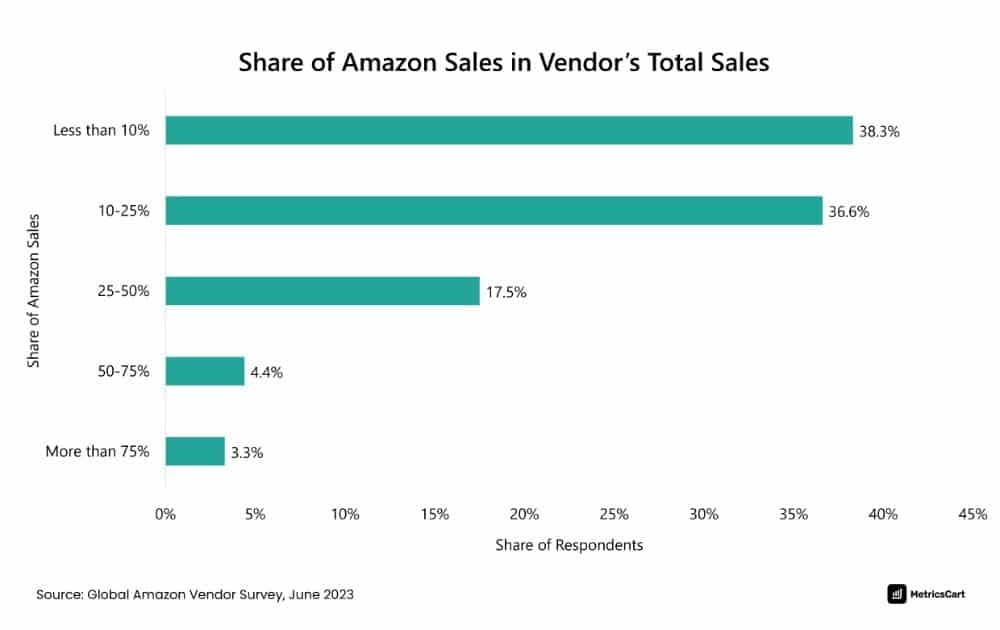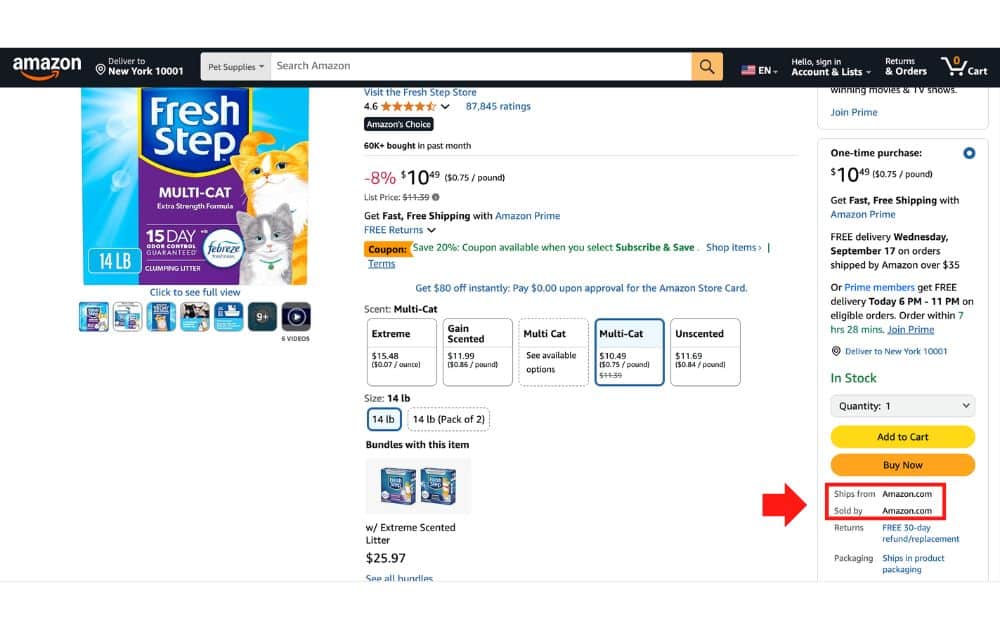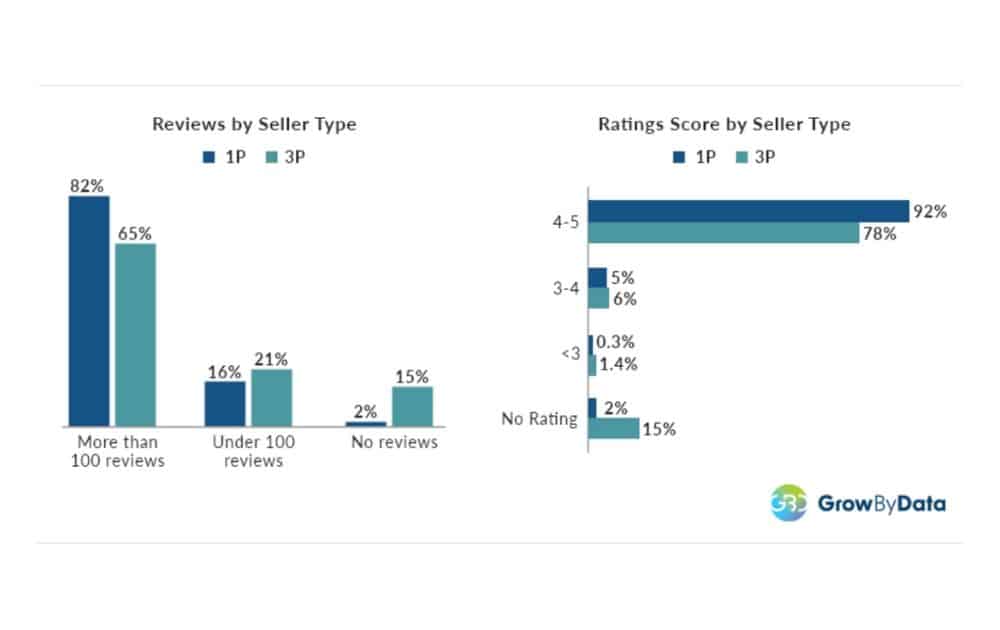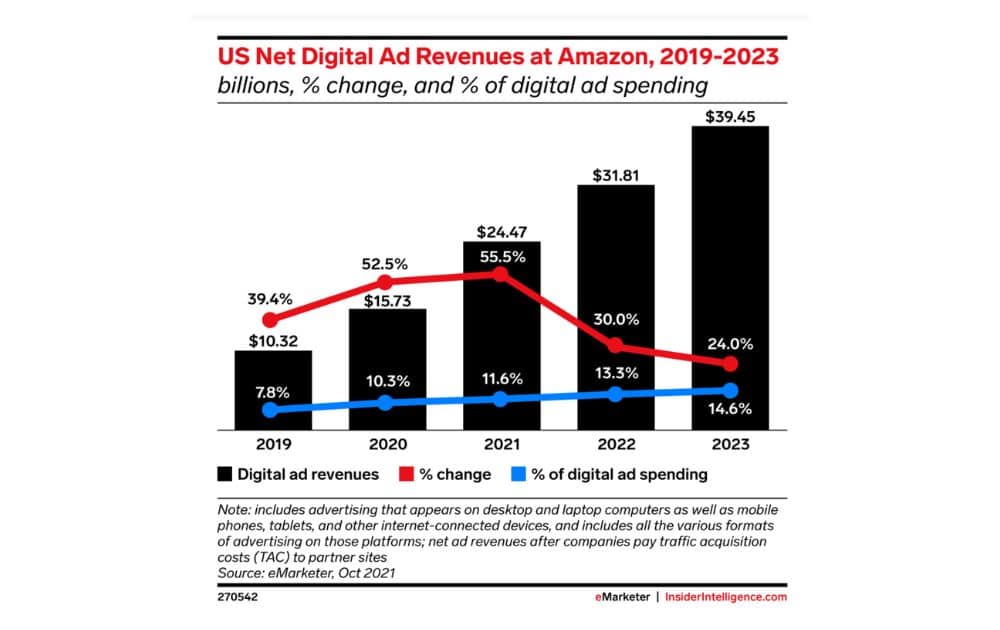How Vendor Managers Can Help Your Brand
Partnering with an Amazon vendor manager can make or break your IP brand at the world’s biggest ecommerce platform.
Most brands aren’t “all-in” and the numbers show it. 38.3% of vendors say Amazon is less than 10% of their total sales; 36.6% put it at 10 to 25%; 17.5% at 25 to 50%; only 4.4% land in the 50–75% range; and a slim 3.3% rely on Amazon for more than 75% of revenue.

For the majority, Amazon is a powerful channel, but not the whole pie. That said, every purchase order (PO), promo slot, and content tweak has to count.
That’s where a great Amazon vendor manager earns their keep. They sit at the crossroads of POs, pricing windows, promotional calendars, and compliance, ensuring that your IP brand appears retail-ready.
Vendor vs Seller
Still confused about the difference between an Amazon Vendor vs Seller? Let’s get definitions out of the way.
- Vendors (1P) sell wholesale to Amazon, who in turn becomes the seller of record to shoppers.
- Sellers (3P) own retail price, inventory, and fulfillment choices.
Vendor managers live on the 1P side and focus on scaling your wholesale business inside Amazon Retail.
Unlike 3P, vendors don’t have to deal with listing products on Vendor Central. Amazon issues POs and vendors ship inventory and supply content, specs, and brand assets so Amazon can publish and optimize the product detail pages.
How do you know if the Amazon product listing is sold via 1P or 3P? Just look at the “Ships from” and “Sold by” information. If both say Amazon, then they are 1P products.

What Is a Vendor Manager?
A vendor manager is the retail-side owner of your relationship with Amazon. Think of this role as a hybrid buyer–strategist. They do tasks such as:
- Plan on demand
- Place purchase orders
- Negotiate terms
- Guide pricing and promotions
- Push for retail readiness (images, copy)
- Monitor compliance
Amazon vendor managers work across operations, advertising, and catalog teams to keep your assortment healthy. They also monitor category key performance indicators, including:
- Sell-through rate
- Margin
- On-Time & In-Full (OTIF)
- Returns
How Vendor Managers Operate
Day to day for a vendor manager is about translating category goals like revenue, margin, and availability into actions you execute using Amazon Vendor Central.
How the Rhythm Works
- Quarterly planning and weekly execution. You and your vendor manager align on targets, assortment, and pricing guardrails. The manager sequences buys and promo slots, then monitors exceptions (e.g., stockouts, returns) as the weeks roll.
- Inputs that matter. Clean forecasts, confirmed lead times, stable case packs, and retail-ready content (titles, bullets, images) drive deeper buys and better shelf placement.
- PO lifecycle. Amazon issues POs, you confirm quantities and dates, ship with compliant labels and an accurate advanced shipping notice (ASN). The vendor manager reviews OTIF and chargeback trends to remove friction.
Core Touchpoints Inside Vendor Central
Here are the core touchpoints inside Vendor Central that you need to keep in mind:
- Catalog and Content. This touchpoint involves creating or refreshing Amazon ASINs, fixing titles, bullets, and images, and keeping specs accurate. Here, your vendor manager pushes for “retail readiness” before promos; escalates catalog fixes; prioritizes which SKUs to onboard first.
- Purchase Orders and the Shipping Loop. Amazon issues POs, you confirm, you ship on time with the right labels, and Amazon receives the items before the product goes live. In this touchpoint, your vendor manager sequences buys, monitors fill rate and dates, flags constraints, and adjusts cadence.
- Compliance. Making sure you have the correct routing guides, carton and pallet labeling, and packaging rules helps you avoid deductions. To assist you in this touchpoint, the vendor manager points out repeat defects and coordinates operations support to remove friction.
- Promotions and Deals. This touchpoint involves lining up inventory cover, price support, and retail media for events like Prime Day. During these events, Amazon vendor management secures deal slots, aligns timelines, and advises on funding levels.
- Scorecards, Reviews, and Business Rhythm. Your vendor manager reviews various KPIs, including ratings and reviews, and sets action items. Why does it matter? Data reveals that 82% of 1P items had 100+ reviews (vs. 65% for 3P) and 92% were rated 4–5 stars (vs. 78%), with far fewer showing no rating (2% vs. 15%).

These numbers indicate that strong retail readiness and availability, driven by the cadence established by Amazon vendor managers, can help pages accumulate the social proof that converts.
How to Get the Most from Your Vendor Manager
Set a clear cadence and agenda
Your vendor manager works best when there’s a steady rhythm. This means monthly business reviews plus quick weekly check-ins for exceptions.
Agree on the KPIs that matter (availability, sell-through, profit margins, chargebacks) and stick to a simple agenda every time. Share pre-reads 24 hours ahead so the meeting is about decisions, not discovery. Close with owners, deadlines, and a running action log.
- Best practice. Send a one-page Weekly Business Review pack (WBR pack) or pre-reads that include a forecast snapshot, PO status, risks, or promo plans before each call. Doing so makes the meeting decision-ready.
Bring crisp forecasts and real constraints
Amazon buys what it believes you can supply, so fuzzy forecasts turn into choppy POs. Give your vendor manager a rolling 90/180-day forecast, real lead times, and capacity limits so they can phase buys and avoid stockouts.
- Best practice. Maintain a living forecast tab with date-stamped changes and the “why” behind each revision. Expect questions; good VMs pressure-test assumptions, not your credibility.
Align inventory, price support, and ads for every promo
Promotions only work when all three levers land together:
- Inventory cover
- Price support
- Retail media
And the stakes keep rising. In fact, data tells us that Amazon’s US net digital ad revenues climbed from $10.3B in 201 to $39.45B in 2023, while its share of US digital ad spend grew from 7.8% to 14.6%.

Bigger budgets chasing the same deal windows mean wasted spend if ads outpace supply or pricing. Share your promo calendar early so your vendor manager can secure deal slots and phase POs.
- Best practice. Build a one-row “promo brief” per ASIN (dates, target price, inventory cover, ad budget, hero keywords).
Know when to loop in an Amazon senior vendor manager
Most problems resolve at the vendor manager level when you present facts, attempted fixes, and a clear ask. For bigger bets, however, the vendor manager may involve an Amazon senior vendor manager to widen the lane. These situations may include:
- Major launches
- Cross-country distribution
- Large Co-op negotiations
Keep escalations short, structured, and solution-oriented so leadership says “yes” faster. Then route outcomes back into the weekly plan.
- Best practice. Use a three-slide escalation: (1) issue + impact, (2) attempts to fix, (3) proposed options with pros/cons.
Treat retail readiness like a launch checklist
Conversion lives and dies on the product page, and your vendor manager will push for clean titles, strong images, A+ content, and accurate attributes. Sometimes, returns are reduced and ratings increase with a few tweaks in small details, like:
- Size charts
- Compatibility notes
- Lifestyle shots
Prioritize your top ASINs, fix obvious gaps, and refresh visuals ahead of peak moments. It also pays to make content changes measurable by tracking before conversion and after conversion.
- Best practice. Run a quarterly “Top 20 ASINs” content audit and ship all fixes two weeks before major events.
Negotiate with data, not vibes
When engaging in discussions, ensure you’re prepared with landed-cost math, freight assumptions, and realistic promotional ROI, rather than relying on your gut feel.
Your vendor manager must hit category margin targets; you protect unit economics by knowing your floor price and the trade-offs you can make. If packaging changes or your MOQs lower cost, negotiate for something tangible in return, such as:
- Deeper or more stable buys
- Better merchandising
- Deal placement
Document every give/get so both sides remember why the decision was made.
- Best practice. Partner with an expert like AMZ Advisers to build a comprehensive negotiation package. This includes current versus proposed margin by ASIN, funding scenarios (base/best/worst), expected volume, and operational constraints. With expert ecommerce advice in every step, you can get the best position at the negotiating table.
The Bottom Line
Your Amazon vendor manager connects the dots: forecasting, POs, retail readiness, compliance, promos, and analytics. That process helps ensure that every buy and every deal slot actually moves the needle.
Get the rhythm right, and Amazon Vendor Central starts acting like a growth engine for your IP brand.
Author
 Carla Bauto Deña is a journalist and content writer producing stories for traditional and digital media. She believes in empowering small businesses with the help of innovative solutions, such as ecommerce, digital marketing, and data analytics.
Carla Bauto Deña is a journalist and content writer producing stories for traditional and digital media. She believes in empowering small businesses with the help of innovative solutions, such as ecommerce, digital marketing, and data analytics.
The post How Vendor Managers Can Help Your Brand appeared first on AMZ Advisers.


